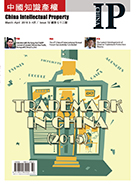The European Union Chamber of Commerce in China held Conference on IPR, Innovation & Development and IP Friendly Awards
By Emily Tan, China IP,[Comprehensive Reports]
The sheer speed and scope of China’s growth are what make the country so unique and the investment opportunities so attractive. However, challenges in China are on the rise. Human resource concerns and inconsistent regulatory interpretation and unclear laws continue to top the list of challenges.
Adequate protection of IPR is one of the top concerns for European business in China. According to Business Confidence Survey 2015 released by the European Union Chamber of Commerce in China (the European Chamber), as for the question of “Which are the most significant regulatory obstacles for your company when doing business in Mainland China?” A highly significant 21% of respondents considered IPR protection among the top three challenges in China’s regulatory environment.
Despite IPR in China being an ongoing concern, the European Chamber appreciates the recent moves taken by the authorities in order to improve China’s general landscape. In fact, the IP protection environment is changing better in China.
Under such backdrop, the European Chamber held a conference on 30 March, 2016,, with a special awards ceremony that recognises China’s most “IP-friendly” regions, to show appreciation for the efforts made by local authorities all across the country.
Mr. Francisco Perez Canado, Head of Trade Section at the EU Delegation, and Mr. Chen Fuli, Deputy Director General, Department of Treaty and Law, MOFCOM, delivered keynote speeches. DDG Chen spoke passionately about the developments China has made in the field of IP and commended the European Chamber on this constructive initiative.
Five Award Categories The European Chamber’ s Intellectual Property Rights (IPR) Working Group defined five award categories: Transparency, Efficiency, Cooperation, Deterrence and Fairness.
1.Transparency can be applied in two ways: 1) are judgements or administrative decisions published and accessible on the Internet? 2) do the enforcing administrative authorities treat the IP owner as the victim and allow their active participation in judicial proceedings? 2.Efficiency measures the level of availability, speed and thoroughness of enforcement authorities in a given region. 3.Cooperation takes into consideration the level of cooperation between the different enforcement authorities. This factor is often the key to a successful case. 4.Deterrence measures the ratio between the ‘size’ of a given case and the corresponding penalty/damages handed down at the end of the enforcement procedure.
5.Fairness refers to the authorities— mainly judges—exercising discretion to make full use of the law in a ‘constructive’ way in order to obtain a fair result; this is the opposite of a ‘restrictive’ approach, which may still be within the boundaries of the law but leave a feeling of unfairness. The European Chamber started the process by soliciting opinions from its more than 1,600 members for each of these five award categories, in order to shortlist potential candidates.
Members of the European Chamber were also encouraged to submit detailed reasons—including actual case studies— to illustrate why they made their choice.
Nomination forms were then submitted to a judging committee who selected the winning regions deemed to have demonstrated outstanding performance in each of the five categories.
Take Zhejiang Province, who has win the awards of Transparency and Fairness, as aan example. Based on the IP Friendly Provinces Study by IP Key, Zhejiang Province is the overall best performing region by considering the following factors: (1) Overall ranking of the number of IP first instance civil Judgments published/the number concluded by local courts and the number of published IP first instance civil cases involving foreign party(plaintiff or defendant, 2006-2014)/10,000p(1st place). (2) The number of published IPrelated penalty decision issued by local customs/10,000 people(1st place). (3) The number of IP first instance civil Judgments published/the number concluded by local courts(2nd place). (4) Overall ranking of the number of IP first instance civil Judgments published/ the number concluded by local courts and the Number of IP First Instance Civil Judgment published by Court (2006-2014)/10,000p(1st place).
Based on case studies submitted by European Chamber member companies, winners were chosen.
These winning regions included: Zhejiang, Guangdong, Shandong, Shanghai, Tianjin and Beijing.




